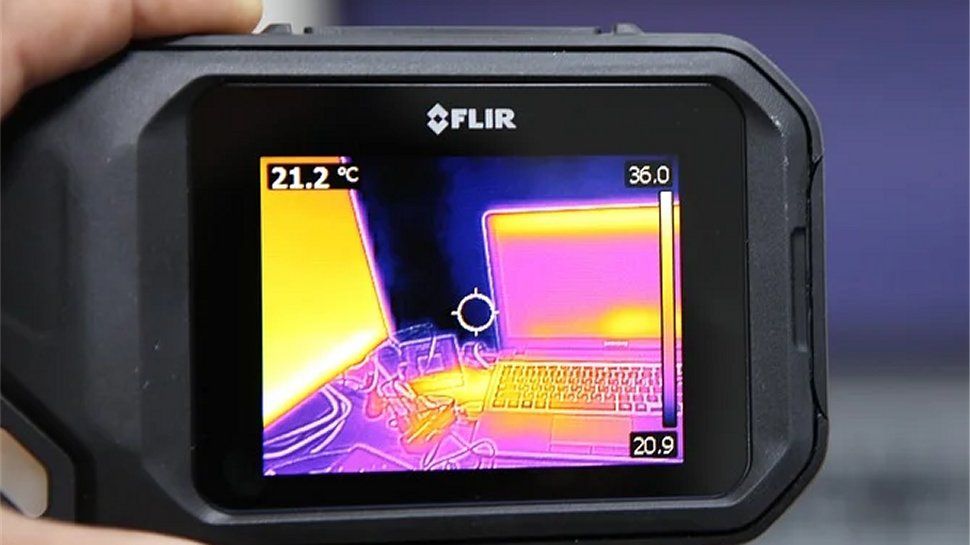
As the coronavirus pandemic continues to develop with critical businesses remaining open and governments considering plans for reopening economies, businesses are seeking out technologies to help slow the spread of the virus and keep employees and customers safe.
About the author
Chris Bainter, director of global business development at FLIR.
The use of thermal cameras to track individuals’ temperatures at transport hubs and crowded hotspots has been in frequent use since the SARS pandemic in 2003, primarily in East Asia. Now, with COVID-19 a global crisis affecting life as we knew it, there’s been an exponential uptake in the need for these cameras to support government operations and all industries with a focus on critical businesses.
Since the crises has started, thermal imaging cameras have become more widely used for screening than ever before. Its ability to read skin temperatures within +/-0.5 degree Celsius, under typical screening conditions, has quickly made it a preferred tool for frontline screening. The WHO is one organisation that is using this technology to spot-check staff.
For essential workers in food preparation, warehouses, border checkpoints, transit hubs and most importantly the healthcare sector – screening has become a crucial first step in identifying persons with Elevated Skin Temperature (EST).
Early stage detection
The importance of being able to detect early signs of sickness cannot be underestimated in current times. Thermal cameras are excellent tools for detecting temperature variations on surfaces, including skin, at a distance recommended by public health officials, colloquially known as “social distancing.” The screening procedures implemented at airports and in other public places can be a first step when it comes to detecting a person with an elevated temperature. Emirates Airlines has been using it to check passengers travelling to the US in recent weeks.
For those whose skin temperature is higher than expected based on other individuals being screened, a secondary screening should be administered using medical-approved screening equipment such as oral thermometers. While thermal screenings can help detect higher than normal skin temperatures, carriers of the virus could be asymptomatic and not have an increased body temperature; therefore, it is recommended as one component of a comprehensive safety program. Additional medical screening is critical as FLIR’s thermal cameras are not capable of detecting or diagnosing viruses, fevers or other medical conditions.
Accuracy of screening
For measuring skin temperatures, it is important to use higher resolution and higher stability cameras, such as specific FLIR A-Series, T-Series, or E-Series cameras. These models include an on-camera screening mode, which is an algorithm, that allows operators to screen for elevated skin temperatures in each individual relative to the persons previously screened within an existing environment. This allows the algorithm to have a dynamic baseline and account for the normal skin temperature changes throughout the day. Such frontline tools are critical for businesses to operate where staff are frequently working together.
At room temperature, these stabilized cameras have +/- 0.5 degree C accuracy and can read individual skin temperatures nearly instantaneously. Accuracy of skin temperature measurement readings will depend on several factors, such as: the camera being used; sensitivity of the focal plane; camera settings; and distance to targets, meaning the camera must be close enough to the subject for detecting multiple temperature pixels near the tear duct—the place that most accurately reflects a person’s core body temperature and is least impacted by environmental effects.
For many industries and customers who rely on this tool as an early indicator, individual screening of staff or the public is the crucial first stage where temperature results can be shared almost instantaneously. Over time, as we see the need for screenings on a larger scale, increasing through-put while maintaining accuracy will be the most crucial element R&D teams will focus on in developing future thermal imaging-based solutions.
Privacy and health tech
As we move into a world where more technology devices will be put in place to monitor our health, one of the biggest question’s consumers will have will be on privacy. Whilst the notion of temperature screening when managed by an employer is more commonly accepted, when it starts to frequent the public sphere – privacy questions will be raised.
The answer is simple; thermal imaging cameras do not have facial recognition abilities. These cameras cannot record a recognizable photographic image of the person whose skin temperature is measured—it can’t determine the eye, hair, or clothing color or skin tone of the individual.
As the phrase the “new normal” takes hold with many people working from home but many other businesses seeking to re-open, we are seeing the shift of skin temperature screening being used by essential businesses to continue operations, to other organisations considering it in order to help them reopen. There’s no doubt that change is upon us and we will need to seek news ways to adapt, both short and long term.
For example, in the very near term, it may be a required standard practice for airline passengers to be temperature screened at an airport. For now, whilst general testing for COVID-19 remains the crux of the conversation globally, thermal technology will be an effective screening tool when combined with medical testing to help monitor and detect signs that relates to the illness, crucial to preventing future outbreaks.
